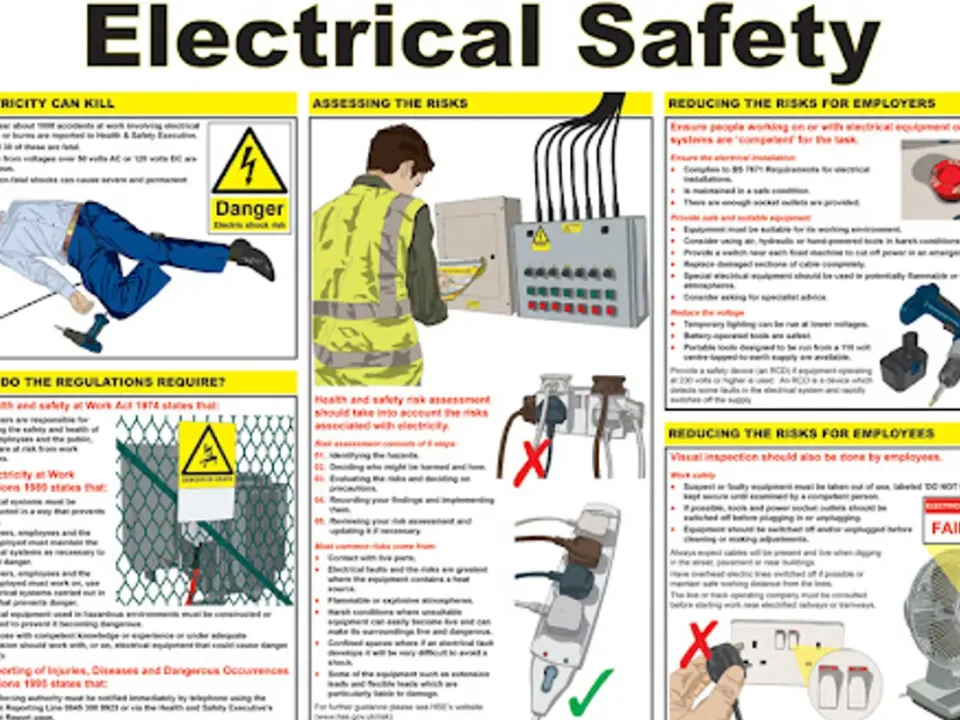Understanding the Importance of Lightening Risk Assessment in Hazard-prone Areas

Empowering Safety Champions: Insights from The Safety Master
July 17, 2023Accident Prevention: 10 Ways to Keep Your Workers Safe
July 18, 2023Understanding the Importance of Lightening Risk Assessment in Hazard-prone Areas
Lightning is an awe-inspiring force of nature, capable of unleashing devastating consequences in hazard-prone areas. Its ability to strike with an intense and destructive power serves as a stark reminder of our vulnerability to the elements. Understanding the importance of lightning risk assessment becomes paramount in ensuring the safety and well-being of communities residing in these areas.
Lightning risk assessment plays a crucial role in mitigating potential hazards associated with thunderstorms. By comprehensively analyzing and evaluating the risks posed by lightning strikes, communities can develop effective strategies to protect lives, property, and infrastructure. It helps identify hazard-prone areas where lightning strikes are more likely to occur, enabling decision-makers to implement proactive measures that minimize risks and enhance resilience.
Imagine a world without lightning. The absence of those mesmerizing bolts streaking across the sky, the rumbling thunder that follows, and the wonder it evokes within us. It would leave an eerie emptiness in our lives. Yet, as fascinating as lightning may be, it also poses a significant threat to life and property in hazard-prone areas.
In this insightful article, we will delve into the importance of lightning risk assessment and its crucial role in mitigating potential disasters. We will explore the devastating consequences of lightning strikes, how hazard-prone areas can be identified through mapping techniques, and the key principles that underpin effective risk assessment.
The Power of Lightning: Unleashing Nature’s Fury
As ancient as the world itself, lightning holds a captivating and awe-inspiring power that both mesmerizes and terrifies. With a single bolt, nature unleashes a spectacular display of energy that can instantly ignite fires, cripple electrical systems, and cause irreparable damage to human lives. This force of nature commands our attention, demanding us to understand its potential for destruction and take the necessary precautions to mitigate its devastating effects.
When lightning strikes, it releases an astounding amount of electrical charge – up to one billion volts in some instances. As this immense discharge surges through the atmosphere, it heats the surrounding air to temperatures hotter than the surface of the sun. In an instant, any object caught in its path may be incinerated or shattered by this explosive force. The sheer magnitude of lightning’s power is a reminder of the incredible forces at play in our natural world.
The Devastating Consequences: Understanding the Impact
When lightning strikes, its destructive force can leave a trail of devastation, reminding us of the immense power of nature. The impact of a lightning strike reaches far beyond the initial moment of contact. It can set off a chain reaction that affects not only individuals but also entire communities.
First and foremost, the immediate consequences of a lightning strike can be catastrophic. The intense heat generated by the bolt can ignite fires, leading to widespread destruction and loss of property. Additionally, the electrical current from a strike can travel through various paths, causing severe injuries and even death to humans and animals alike.
Furthermore, the aftermath of a lightning strike extends beyond physical harm. The psychological toll on survivors and witnesses is often profound, leaving lasting emotional scars that require support and healing. In addition to personal trauma, there are economic ramifications as well. Businesses may suffer significant financial losses due to disrupted operations or damage to essential infrastructure.
However, amidst this somber reality lies an opportunity for growth and resilience. By understanding the devastating consequences that lightning can bring, we become motivated to take proactive measures in assessing and mitigating risks in hazard-prone areas. Through comprehensive risk assessment strategies and effective implementation of safety measures, we have the power to protect ourselves and build stronger communities that are prepared for any adversity nature may throw our way.
Mapping the Danger: Identifying Hazard -prone Areas
In the realm of lightning risk assessment, one crucial step to ensure safety is mapping hazard-prone areas. By delving into the geographic intricacies and climatic patterns, experts can identify regions where lightning strikes are more prevalent and severe. These maps serve as powerful tools to guide communities and individuals in their efforts to mitigate risk and protect lives.
With meticulous data analysis from meteorological records, topographic features, and historical lightning strike information, hazard-prone areas start to reveal themselves on the map. Mountainous terrains with tall peaks, open landscapes devoid of tall structures, or low-lying areas near large bodies of water can all contribute to an increased likelihood of lightning strikes. By pinpointing these danger zones, communities gain a clearer understanding of where preventive measures should be prioritized.
Lighting the Way: The Key Principles of Lightning Risk Assessment
When it comes to lightning risk assessment, a thorough understanding of the key principles is paramount in safeguarding hazard-prone areas. This entails comprehending the intricate interplay between atmospheric conditions, geographical features, and human vulnerabilities. The first principle involves analyzing historical data on lightning strikes and their intensity within a given region. By studying patterns and trends, experts can identify high-risk zones and better anticipate potential dangers.
The second principle revolves around evaluating the effectiveness of lightning protection systems in place. This requires meticulous inspections of grounding systems, surge protectors, lightning rods, and structural components to ensure they meet industry standards. By meticulously verifying proper installation and maintenance procedures, the risk of equipment damage or loss due to lightning strikes can be significantly reduced.
Building the Basics: Essential Tools for Risk Assessment
In order to effectively assess the risk posed by lightning in hazard-prone areas, it is crucial to have a solid foundation of essential tools. These tools act as guiding beacons, illuminating the path towards accurate risk evaluation and appropriate mitigation strategies.
One vital tool in lightning risk assessment is reliable meteorological data. Weather monitoring systems, such as state-of-the-art lightning detection networks and weather radar systems, enable meteorologists to track storm patterns and identify areas of potential hazard. By analyzing this data, experts can forecast the likelihood of lightning strikes with greater accuracy.
Another indispensable tool is advanced mapping technology. Geographic Information Systems (GIS) play a pivotal role in visualizing hazard-prone areas and assessing their vulnerability to lightning strikes. Through detailed mapping, professionals can identify high-risk zones based on various factors like topography, land use patterns, and proximity to conductive materials or tall structures.
Furthermore, comprehensive historical records serve as valuable references for risk assessment. Studying past incidents provides insights into the frequency and severity of lightning strikes in specific locations over time. This historical perspective helps experts anticipate potential threats more effectively and refine their strategies accordingly.
All these tools work synergistically to form a cohesive framework for assessing lightning risks accurately. By harnessing the power of meteorological data, advanced mapping technology, and historical records, professionals can lay a solid groundwork that enables them to safeguard lives and properties from the devastating impact of lightning strikes.
Assessing Vulnerabilities: Factors to Consider in Hazard-prone Areas
In the daunting task of lightning risk assessment, it is essential to meticulously evaluate the vulnerabilities present in hazard-prone areas. These factors play a crucial role in determining the level of risk posed by lightning strikes and help devise effective mitigation strategies. A comprehensive understanding of these elements enables communities to safeguard lives and infrastructure against nature’s electrifying force.
One fundamental factor to consider is geographical location. Certain areas are more prone to lightning strikes due to their proximity to thunderstorm hotspots or unique topographical features that enhance atmospheric instability. Additionally, analyzing historical data on lightning activity allows for the identification of high-risk regions where lightning strikes occur with greater frequency or intensity.
Taking Action: Implementing Lightning Safety Measures
Once the risks and vulnerabilities have been identified through a comprehensive lightning risk assessment, it is essential to take immediate action to ensure the safety of individuals and infrastructure in hazard-prone areas. Implementing effective lightning safety measures requires a proactive approach that combines technological advancements, community engagement, and regular maintenance.
An integral part of lightning safety is the installation of lightning protection systems (LPS) on buildings and structures. These systems act as a shield against strikes by providing a low-resistance path for lightning to follow, safely redirecting it into the ground. Components such as air terminals, conductors, grounding systems, and surge protection devices are carefully designed and installed to prevent damage caused by direct strikes or induced surges.




